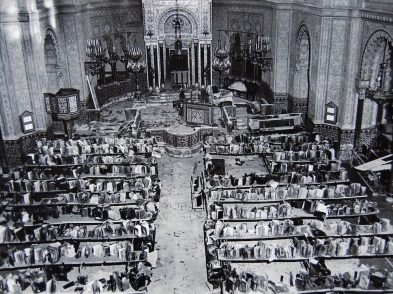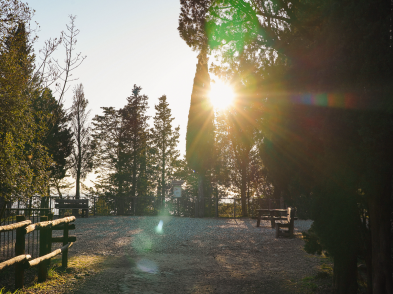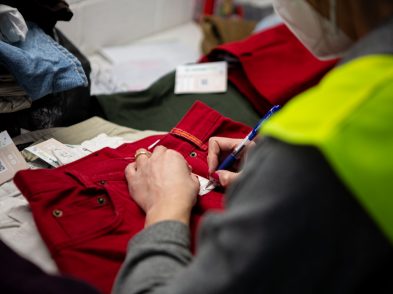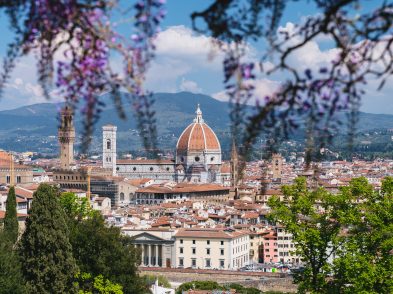‘Street art, or guerilla art, needs to be reinvented in dialogue with the Renaissance city,’ says Clet Abraham, the French-born artist who has come into the public eye for his surprising interventions in public spaces. I sat down with him to learn more about his project and to discuss the role of street art in Florence.
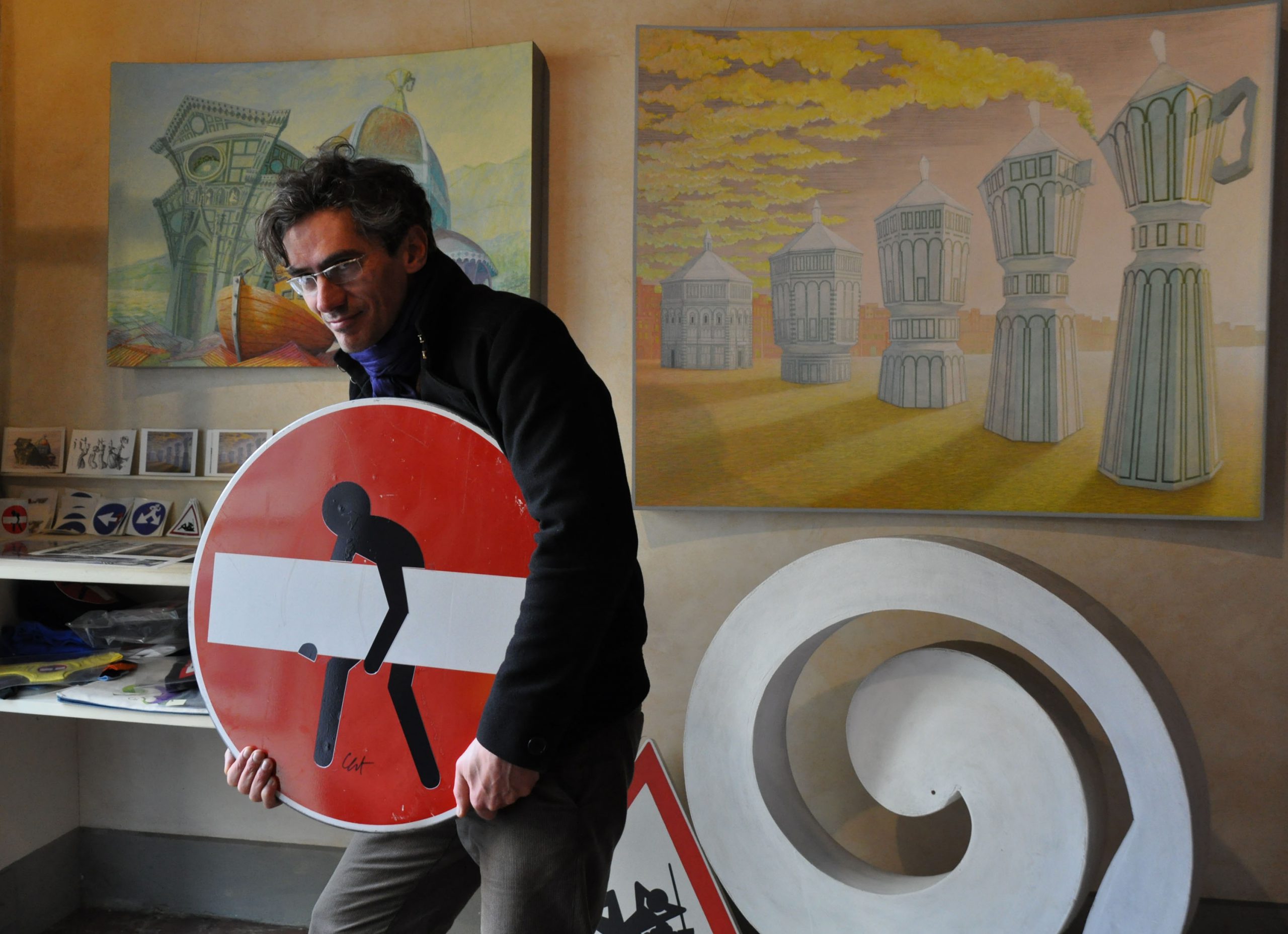
You may not know it, but you’ve probably seen work by Clet out on the streets. Since last summer, he’s been conducting night-time blitzes to alter traffic signs: a silhouette of a man carrying away the no-entry bar; a dead-end ‘T’ sign becomes a pietà or a crucifix. The figure is created with a black sticker that is easily removable.
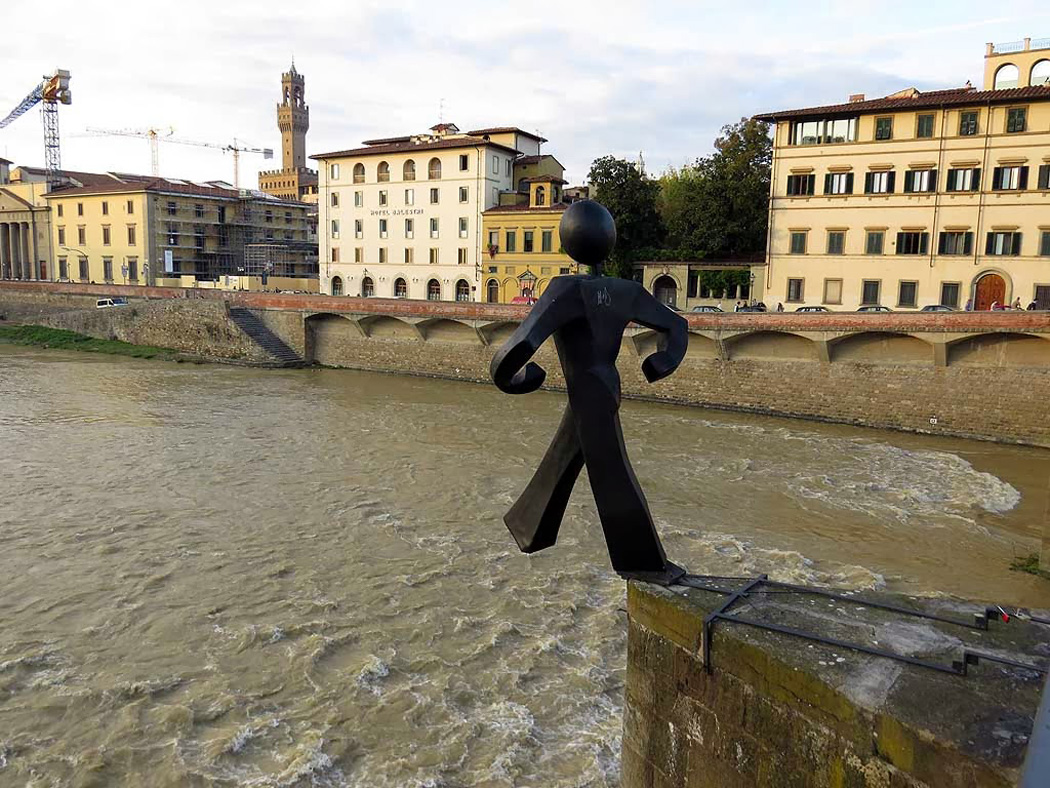
In October he received a 400 euro fine for his efforts: altered, the signs violate local traffic laws. Undeterred, Clet not only continued his work but began thinking bigger.
On January 20, 2011, residents woke to find Clet’s Common Man, a life-size fiberglass statue, installed without permission on Ponte alle Grazie. Much appreciated and much photographed, it was removed seven days later. Clet is now trying to find out how to retrieve his sculpture, which was confiscated by the Soprintendenza. His neighbours in San Niccolò have formed a committee and are currently organizing a petition to help him, echoing fans’ cries on Clet’s 2,000+ strong Facebook page to ‘give us back the Common Man!’
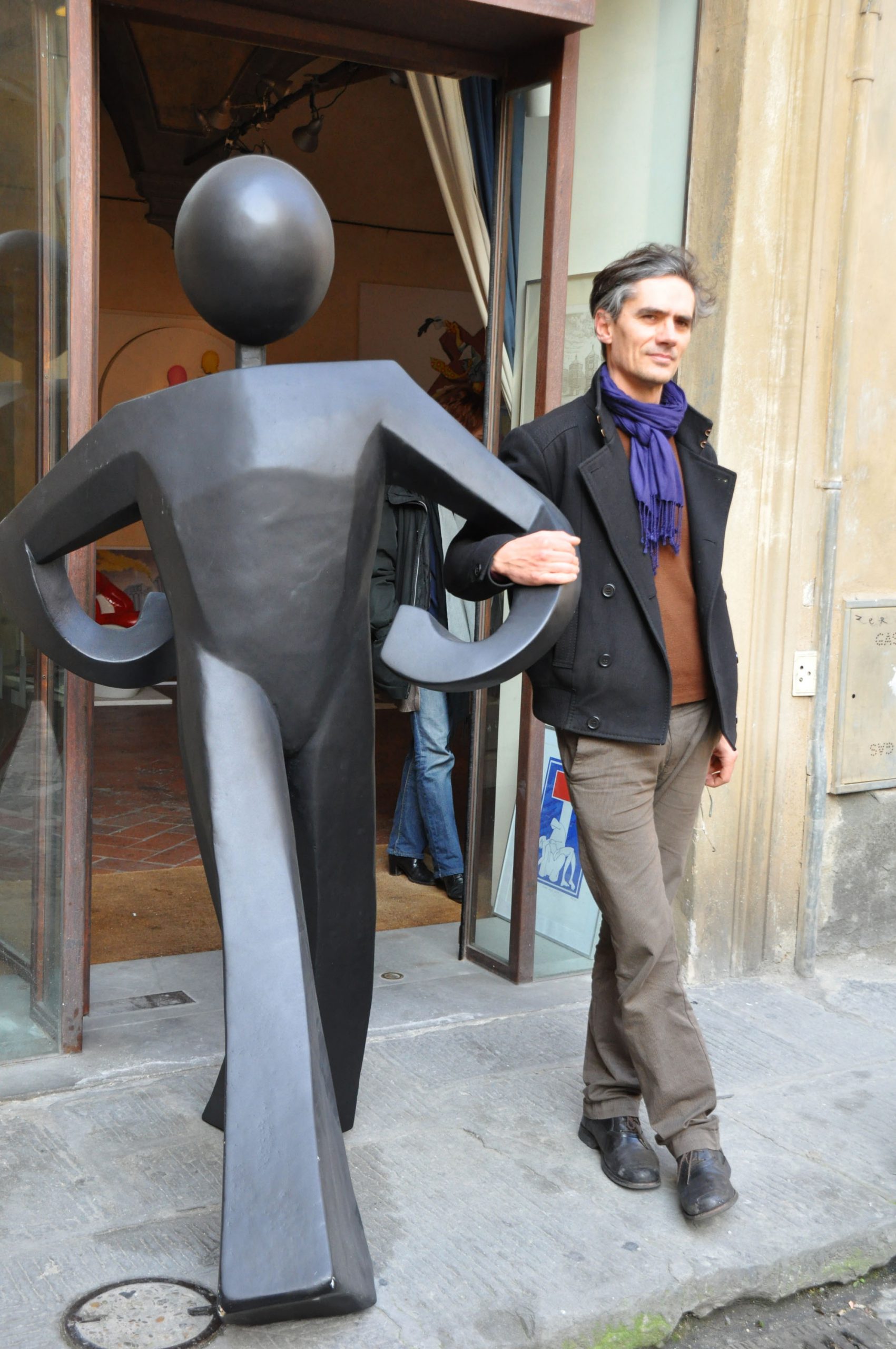
Judging from the encouraging comments on his Facebook fan page and the amused remarks I’ve overheard while standing near his altered signs, the public response to Clet’s art appears to be positive. Art critic Francesco Bonami, however, is less supportive: in a recent article in the Corriere Fiorentino, he equates Uomo Comune to the Bic pen man and considers it a sad symbol of the decline of the entire Tuscan region.
I asked Giuliano da Empoli, Florence’s superintendent of culture, what he thought of Clet’s work. ‘I find it enjoyable. It inserts an element of surprise, which is important in a metropolis. But the city administration’s role is to fight street art at all costs.’ He believes that the contrast between local administration and artist is what drives street art, by definition, and so he thinks it would be no favour to street artists if he were to authorize their work.
Is lack of permission an essential part of Clet’s art? Position and surprise are elements that contribute to the meaning of the works. Common Man walks perpendicular to traffic on the bridge, proud and determined as he takes the first step in his battle against bureaucracy and the daily grind. His removal, Clet admits, is part of the plan but ‘one can always hope that they might see the light and leave it up, at least for a little while longer.’
Another question concerns the lines between urban degradation and street art. Clet asserts that harmony with the city and respect of its historic aesthetics guides his art and makes it exclusively Florentine. He reflects on how it differs from the American guerrilla art movement: in Florence, he says, unlike in a large city like New York, a big wall of graffiti is simply out of place. Clet maintains that he enters into dialogue with the city and intervenes where elements break with history. Thus street signs, a modern invasion, are fair game.
Clet says he is open to a dialogue with city authorities. For example, he would like permission to install four sculptures on Ponte alle Grazie. Common Man is just one of the set that he developed in response to the oft-criticized architecture of the modern bridge. Da Empoli responds that he is open to proposals; he helped establish a commission for public art-comprising critic Francesco Bonami; curator of the Strozzina, Franziska Nori; and artistic director of the Museo Marino Marini, Alberto Salvadori-to evaluate proposals for and donations of public art to the city. There are also other projects in the works to support contemporary art, including funding for pieces destined for the new courthouse in Novoli.
Artists are a necessary part of society due to their ability to provide social commentary and to help resolve the often uncomfortable dichotomy of modernity in an ancient city.
Artists can also help bring much-needed revenue to the city’s coffers. While Palazzo Vecchio has raised admission prices for viewing Damien Hirst’s diamond skull-an imported artistic product-installations by local artists could bring renewed attention on the part of Florentines. Guerrilla art as marketing? Why not? Clet managed to install his self-portrait in a gallery in Palazzo Vecchio, where it went unnoticed for 24 hours. Had it been left even longer, he contends, it might have drawn in viewers. And it was free.
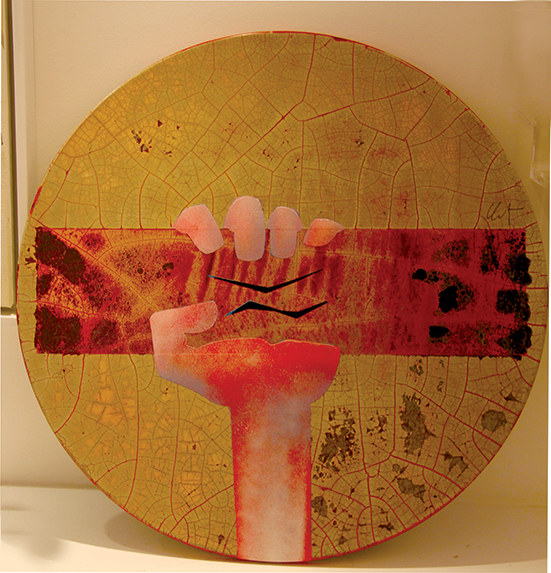
Street art, when done well, Clet says, is a gift to the city and its residents. With all this giving, you might wonder how Clet makes a living as an artist. You can visit his studio in via dell’Olmo, 8r where he sells items (stickers, pins, and even underwear) based on his work, as well as city street signs about to be discarded by the road works office, which he has transformed for the sake of art.

